PLENARIES
The EMCEI-23 Steering Committee have invited and also received requests from renowned distinguished scientists from over the world to offer plenaries on cross-cutting themes of environmental sciences, with a primary focus on the Conference Tracks. We wish to express gratitude to the following scholars who have agreed to serve as plenary speakers:
Track 1. Engineering applications for environmental management
Plenary 1: Lignosulfonates in Agrocomposites
-
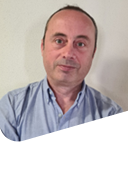
Philippe Michaud
In his plenary, Dr Michaud will talk about the Lignosulfonates in agrocomposites. Lignin is a polymeric constituent of vascular plants. It is a by-product, poorly upgraded, from paper industry and biorefinery. To evaluate their potential in agrocomposites field, commercial lignins were processed along with corn cob, an agro-industrial residue used hereby as a natural fibre. Firstly, a compression-moulding process allowed the combination of lignosulfonates and corn cob particles. The impact of particle size, fibre content, and compacting pressure on compressive mechanical properties was measured. The acoustic insulation properties of agrocomposites and their thermal conductivity suggest applications in the building sector. Secondly, formulations of bio-based materials were developed by twin-screw extrusion, and then injection moulding, combining a bio-based thermoplastic polymer matrix with technical lignins and corn cob particles. The addition of Kraft lignin led to increased hardness of the materials up to 50 % and more hydrophobicity compared to polylactic acid. Nevertheless, their mechanical strengths decreased (by a maximum of 40 %) and materials exhibited a more brittle fracture profile. In the presence of corn cob, transfer of forces from matrix to fibres was not ideal since de-bonding was detected at the interfaces under irreversible flexural stress. However, these bio-based materials exhibited mechanical and thermal properties that made them suitable for synthetic plastics substitution while adding value to by-products of agricultural and forest industries.
Philippe Michaud is a Full Professor of biochemistry since 2005. He is head of the "4Bio" research group at the Institut Pascal, an interdisciplinary research laboratory of Clermont Auvergne University. His scientific skills focus on the development of bioprocesses for obtaining polysaccharides from various sources and analysis of their structure-function relationships. He has published 245 research papers and 20 book chapters. He is the co-inventor of 14 patents, 3 of them leading to industrial exploitation. He has been the advisor or co-advisor for 25 PhD students. Since 2005, he has been in charge of more than 30 national and international research projects, funded or co-funded by industry. He was the general secretary of International Forum on Industrial Bioprocesses between 2015 and 2018. He is topical chief editor of Euro-Mediterranean Journal for Environmental Integration, deputy editor of Bioengineered, and associate or guest editors of numerous international journals. He has been nominated as Chevalier des Palmes Académiques in 2020 and received the Distinguished Scientist Award for the year 2021-2022 by the International Bioprocessing Association.
Track 2. Process control, simulations and intensification for environmental management
Plenary 2: Process intensification for integration of industrial process and environmental implications
-
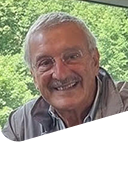
Gabriele Iorio
In his plenary, Prof. Iorio will talk about the process intensification for integration of industrial process and environmental implications. In the European Roadmap of process intensification (PI), PI is defined as a set of innovative principles applied in process and equipment design, which can bring significant benefits in terms of process and chain efficiency, lower capital and operating expenses, higher quality of products, less wastes and improved process safety. In the chemical and biochemical process industry, typical intensification gains include increased plant capacities, reduced raw material costs, smaller facilities, and improved sustainability. Process intensification in the form of integrating an in-situ product or intermediate removal can also improve any industrial processes. In this presentation, the effects of integrating different systems, including intermediate cascade as well as the potential for further process integration in form of chemical and biotechnological process are discussed. To evaluate the application of process integration, different process configurations are compared regarding to efficiency using a simulation and model-based approach. Although the highly integrated process leads to lower space-time yields in some cases, an operating window can be identified in which the space-time yield is significantly higher compared to a sequential process. To distinguish both cases and thus choose a suitable operating point simulative studies are required. That is, different combinations of phenomena lead to different characteristics/performance and, therefore to different physical unit operations/ flowsheets. As an example, different combinations of water treatment or enzyme-based catalytic reactors are in use in various parts of the world without much knowledge of PI concepts or increasing efficiencies. Synergetic approach and systematic strategies based on PI concept not only led us to achieve higher efficiencies in terms of product generation but also reducing the system size, thus helping the energy consumption and Carbon footprint. Hence, to extend the search space for process improvement, process synthesis and design incorporating PI needs to be investigated at the phenomenological level. Moreover, a potential for further integration can be identified for the reference process studied in this presentation. There are also limitations to PI, and an awareness of these is essential if correct application is to be assured. This presentation will also summarize the awareness and advantages of the PI to all these aspects, as well as indications where the technologies and uses of PI are elaborated upon in more depth.
Gabriele Iorio was born in Maddaloni (CE) on 01 October 1946. He began his scientific activity in 1972 at the Faculty of Engineering of the Federico II University of Naples, where he held the position of Assistant Professor of Principles of Chemical Engineering (from 1972 to 1980) and Associate Professor (for the first in Italy) of Dynamics and Control of Chemical Processes (from 1980 to 1986). Since 1986 he has moved to the University of Calabria as Extraordinary Professor of Principles of Chemical Engineering, contributing significantly to the development of the engineering area and promoting the establishment of the Department of Chemical and Materials Engineering. He has held various organizational and representative roles within the University of Calabria. He held the position of Deputy Director of the Department of Computer, Modeling, Electronics and Engineering Systems Engineering (DIMES) until October 2015. At the University of Calabria, Prof. Iorio has carried out a long and intense teaching activity, characterized by considerable attention to the transfer of knowledge and scientific experience gained in the research activity. He held the fundamental courses of "Principles of Chemical Engineering" and of "Dynamics and Control of Chemical Processes" for over thirty years. The professor. Iorio has been, since the 1970s, one of the main animators of the Chemical Engineering Group of the University (GRICU), an association that sees among its members almost all of the researchers and professors of Chemical Engineering of the Italian Universities. In addition to the Italian universities, Prof. Iorio has carried out fruitful study and research activities at prestigious foreign institutions. In particular, he was: Research Fellow at the Department of Engineering Chemistry and Biochemistry of University College London, United Kingdom (1974); Researcher at the Laboratoire de Technologie Enzimatique of Compiegne, France (1979); Visiting Professor at the Department of Chemical Engineering of the University of Pennsylvania, USA (1983); Visiting Professor at the laboratory of Biotechnology of the University of Tokyo, Japan (1986). Professor. Iorio has played an active role in the national coordination of several research projects of interest national. He was also responsible for the research programs of the CNR and also coordinator, for the University of Calabria, several European research projects. His extensive scientific production, a selection of which is given below, consists of more than 150 high impact published work. The research interests of Prof. Iorio have mainly concerned: the Characterization and Modelling of Catalytic and Biocatalytic Reactors; and the physical-mathematical modeling of Transport phenomena. It should be noted that the approach of Prof. Iorio has always been directed towards the research activity to the resolution of problems of real interest, as evidenced by the two European patents.
Track 3. Ecotoxicology, environmental safety and bioremediation
Plenary 3: Soluble Enzyme-Mediated Metal and Radionuclide Remediation by Genetically Engineered Bacteria (cancelled)
-
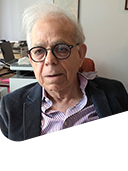
A. C. Matin
In his plenary, Dr Martin will talk about the soluble enzyme-mediated metal and radionuclide remediation by genetically engineered bacteria. Contamination with toxic metals and radionuclides at the Department of Energy/Superfund and other waste sites world-over is a serious environmental problem, which is a clear and present danger to drinking water supplies. Most of these metals/radionuclides (referred to from here on as “metals”) can be rendered insoluble and immobile by bacterial reduction, thereby preventing their leaching from the contaminated sites. The membrane-located electron transport chain of certain bacteria can reduce many of these metals. Examples are several iron and sulfate respiring bacteria, which can use these metals as terminal electron acceptors and are promising in bioremediation. However: a) Their respiration is inhibited by NO3 and O2, one or both of which are present at the waste sites. b) Like all bacteria, these respirers can also reduce the metals intracellularly by enzymes whose physiological role is energy generation and biosynthesis. But these enzymes reduce the metals by one-electron transfer, converting them into reactive valence states. Redox cycling of the latter generates severe oxidative stress, poisoning the cells and hampering bioremediation. c) The metal respirators release the reduced product into the environment, where it is prone to re-oxidation by other bacteria, chemicals, and/or redox potential changes. We have discovered a family of soluble bacterial enzymes that have the capacity to reduce chromate [Cr(VI)] and uranyl [U(VI)], and likely other hazardous metals, to their non-reactive, stable and insoluble reduced state with little or no oxidative stress, as they are obligatory 2- or 4-e- transferers. Using directed evolution, rational design, and x-ray crystallography, we markedly improved the activity of one such enzyme. Its production in bacteria markedly increased their ‘safe’ metal reducing and immobilizing capability. Such intracellular reduction has the further advantage that the reduced species is sequestered inside the cells, and further stabilized by interacting with cell macromolecules, thus minimizing the chances of re-oxidation. Contaminated sites, like most natural environments, are nutrient poor. Under these conditions bacteria activate starvation promoters to synthesize starvation protection proteins and we have shown that remediating genes when linked to these promoters can be effective in bioremediation under starvation conditions. Linking the improved genes to such promoters is a promising approach for generating bacteria with superior bioremediation capability at contaminated sites. Several collaborators contributed to this work; they will be identified in the presentation.
A. C. Matin has been a full professor in Stanford Medical School for several years and is affiliated with several programs, including the Stanford Cancer Research Institute; he elected to become emeritus, July 1, ‘21. His research contributions are numerous, including discovery of new drugs, therapeutic enzymes, and their improvement as well as their specific targeting to cancer (and other diseases). He did his Ph. D. at UCLA, spent some years in the Netherlands (State University of Groningen), where he directed a research group, before joining Stanford. He is recipient of numerous awards and honors.
Track 4. Biotechnology for environmental management
Plenary 4: Development of Microalgae Integrated Bioprocesses for Simultaneous Nutrients Recovery, Wastewater Treatment and Biofuel Production
-

Sami Sayadi
In his plenary, Dr Saydi will talk about the development of microalgae integrated bioprocesses for simultaneous nutrients recovery, wastewater treatment and biofuel production.
Over the last decades, increasing energy demand has led to the intensive use of fossil fuels such as petroleum and natural gas. The depletion of these nonrenewable fuel sources has sparked scientists to secure alternative sustainable options. Recent reports have demonstrated that microalgal biomass could be a potential resource for renewable fuel production owing to several characteristics such as a rapid growth rate, high lipid content and the ability to grow on non-arable land while using various water sources, e.g. sea water, brackish water or wastewater.
Water is a precious resource that must be judiciously used and the use of non-potable water such as industrial or municipal wastewater for microalgae cultivation could minimize water utilization. On the other hand, commercial microalgae production faces an economic feasibility issue because of the high operating costs, which include culture medium costs and biomass harvesting which reduces the attractiveness of microalgae as a sustainable alternative. Therefore, integrating algae technology with aerobic and anaerobic wastewater treatments appears to be a viable solution in ensuring economic and environmental benefits from the development of microalgae-based fuel and products.
Dr Sayadi and his collaborators have conducted several studies dealing with the optimization of microalgae cultivation for nutrient recovery and biofuel production. They have isolated local microalgae strains that show robustness and tolerance to different culture conditions and strains that were successfully cultivated on high strength wastewater. The studied microalgae were found to be performant in N and P removal, emerging contaminants degradation and biofuel production. They have also conducted studies on the combination of anaerobic digestion and ultrafiltration with microalgae cultures. Finally, the anaerobic digestion of crude or pretreated microalgae biomass in continuous anaerobic stirred tank reactors was evaluated.
Sami Sayadi is a Qatar Shell Distinguished Professor at Qatar University. He received his Ph.D. from the University of Technology of Compiègne (UTC, France) in 1988 after finishing studies in biological engineering. He worked at INRA Grignon (France) on lignin biodegradation until 1990 as a postdoc. His field of expertise is the implementation of biological systems and bioprocesses dealing with food and water security, bioremediation, algal biotechnology and bioenergy. He joined the Centre of Biotechnology of Sfax (CBS) in Tunisia where he founded in 2002 a research laboratory entitled Laboratory of Bioprocesses. From 2010 to 2018, Prof. Sayadi was appointed as the General Director of CBS. He joined Qatar University in January 2019 as Qatar Shell Distinguished Professor and he is the Director of the Center for Sustainable Development at CAS (QU) since June 2021. He published more than 400 international publications (Google Scholar H-index: 81, i10 index 319, citations 21000). He got important awards at the national and international level, the "Tunisian President Excellence Researcher Award" in 2017 and the French Magazine "La Recherche" Field « Environment » in 2006. Prof. Sayadi has successfully led several national and international projects financed by the European Union, USAID, JST, and QNRF.
Track 5. Climate-change-related effects on the environment and ecological systems
Track 6. Natural resources, agriculture and the environment
Plenary 6: Geogenic co-contaminants in global groundwater – Challenges for achieving the targets for Sustainable Development Goal 6 (SDG 6)
-
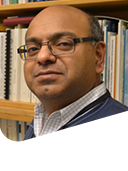
Prosun Bhattacharya
Founding Editor-in-Chief of Groundwater for Sustainable Development (Elsevier)
Associate Editor of Journal of Hydrology (Elsevier)
Fellow of the Geological Society of America (April 2012)
International Water Association (IWA) Fellow (September 2018)
STE International Achiever Award (2019) by the Save the Environment Foundation
TU Delft Global Drinking Water Best Paper Award (November 2019)
KTH Royal Institute of Technology, Stockholm, Sweden
In his plenary, Professor Bhattacharya will talk about the Geogenic co-contaminants in global groundwater – Challenges for achieving the targets for Sustainable Development Goal 6 (SDG 6). Significant data collected over the past decades through innumerable studies across the world concerning the distribution, mobility, fate, and transport of arsenic (As), fluoride (F), and other potentially toxic elements (PTE) in groundwater basins across the world has not been sufficient to address the challenges for adequate and safe drinking water supply and improved public health concerns. Revisiting this data with the objective of enhancing our data analysis capability for both generic as well as site-specific characteristics of contaminants in different groundwater basins is crucial. This will enable predictions on As, F, and other PTE concentrations in groundwater basins as well as the proportion and extent of the affected population through a combination of geological and other environmental proxies. Such proxies have a strong potential to be used for future water quality surveys and predictions in unexplored areas. In this regard, there is an urgent need to develop an understanding of the global, regional- as well as local scale standing on the mechanisms of the contaminant mobility from the sources through different aquifer media and the various water-solid phase interactions in dynamic groundwater media. The introduction of machine learning (ML) techniques has deepened our data analytical capability for both generic as well as site-specific characterization of contaminants in different groundwater basins. The ML outcomes can further facilitate a proper understanding of the interaction of groundwater elements in water sources, which would be beneficial to the drinking water utilities to design and adapt optimized treatment systems for public water supplies to meet the criteria for compliance to the drinking water standards. Thus, ML methods and tools can provide new insights into the known global problems in the water sector to ensure drinking water safety. Further, the results based on ML perspective, can be used to assess the current policies and discover possible bottlenecks that may require urgent intervention by the national governments across the world to meet the targets of the Sustainable Development Goal (SDG) 6.
Prosun Bhattacharya is a full Professor of groundwater chemistry and coordinator of the KTH-International Groundwater Arsenic Research Group at the Department of Sustainable Development, Environmental Science and Engineering at KTH Royal Institute of Technology, Stockholm, Sweden. He holds a PhD in Sedimentary Geochemistry from University of Delhi, India (1990). His research interest is in the field of drinking water contamination from groundwater sources in different parts of the world, especially focusing on geogenic contaminants – arsenic and fluoride. He has collaborative research engagements with several universities and research organizations across the world. He is leading the Sida funded bilateral Research Capacity Building programs between Sweden and Tanzania as well as Sweden and Bolivia, focusing on drinking water contamination from groundwater sources and treatment. He has coordinated the prestigious Swedish International Development Cooperation Agency supported action research and implementation project “Sustainable Arsenic Mitigation-SASMIT” Community driven initiatives to target arsenic safe groundwater as a sustainable mitigation strategy in Bangladesh (2007-2017). He is currently leading a project on “Enhancing private sector capacity for scaling up access to safe drinking water - policy, systems strengthening and sustainable service delivery” in collaboration with UNICEF-Bangladesh.
Track 7. Smart technologies for environmentally friendly energy production
Plenary 7: Diamonds from the sky: a revolution in decarbonization technology
-
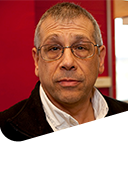
Stuart Licht
In his plenary, Dr Licht will present that a major impediment to CCUS and DAC implementation was the high costs of carbon capture, and that a new process breaks through this barrier by transforming CO2 into a product that is so valuable that, rather than costs of carbon capture, the product can generate a profit for carbon capture. The C2CNT® uses a high temperature, carbon rich, molten carbonate to split CO2 to graphitic carbon nanomaterials (CNMs) by electrolysis.
The properties of these CNMs arise from the unique properties of graphene such as exceptional strength, high conductivity, solid lubrication, electronic and catalytic activity. For example, one of the pure CNM products, carbon nanotubes, has the strongest tensile strength of any material known.
The properties of these CNMs are tuned by distinctive 0D (such as carbon nano-onions), 1D (such as carbon nanotubes), and 2D and 3D (such as graphene nano-scaffold) morphologies. These nanocarbons are useful in a range of applications in the carbon fiber, polymer, electronic, medical, transportation, steel, cement, and power sectors. Built from the same fundamental graphene structure as graphite, which has a geologic lifetime, these nanocarbons can permanently bind the transformed CO2 to mitigate global warming.
The C2CNT® technology received the 2021 Carbon XPRIZE XFactoraward for producing the most valuable product from CO2. A Genesis Device® CCUS demonstration has been built at the in Calgary, Canada, and a large-scale Genesis Device® CCUS plant, the GC3 project, is scheduled in Edmonton, producing 7,500 tonnes of carbon nanotubes transforming the CO2 emission at the Genessee power plant.
Some of the 30 C2CNT® related publications are presented at this website.
Stuart Licht has over 500 high impact peer-reviewed papers and patents on Carbon Capture and Utilization, Climate Mitigation, Environmental Chemistry, and fundamental Electrochemical, Physical and Analytical Chemistry. His work includes the discovery of the CO2 To carbon nanomaterials decarbonization chemistry and technology, and several climate mitigation, new solar energy and new battery processes. He is a Professor of Chemistry at George Washington University in Washington, DC USA, and is the founder of C2CNT LLC (Venice, FL, USA) and Carbon Corp (Calgary, Canada) with website at carboncorp.org. He is the recipient of numerous awards, and is a Fellow of the Electrochemical Society, former Program Director at the United States National Science Foundation, former Chemistry Department Chair at the University of Massachusetts, and former Chaired Professor at Clark University and at the Technion Institute of Technology.
Track 8. Remote sensing and GIS for environmental monitoring and management
Plenary 8: The 2023 Kahramanmaras (Türkiye) earthquake sequence (Mw 7.8, 7.6): Coseismic and interseismic results from Active faulting, InSAR and GPS (Collaborators: Z. Cakir, E. Altunel, R. Sbeinati, S. Ergintav, and U. Dogan)
-
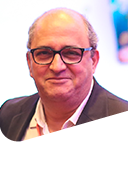
Mustapha Meghraoui
In his plenary, Dr. Meghraoui will talk about the 2023 Kahramanmaras (Türkiye) earthquake sequence (Mw 7.8, 7.6): Coseismic and interseismic results from Active faulting, InSAR and GPS. An earthquake sequence occurred along the East Anatolian fault (EAF, Mw 7.8) and Sürgü fault (SF, Mw 7.6) in the Kahramanmaras region (Southern Türkiye & northern Syria). Both earthquakes show strike-slip mechanisms and shallow hypocentre (<15 km), with NE-SW trending Kahramanmaras and Karasu fault segments reaching ~300 km and E-W trending 150 km Sürgü fault length, respectively. An analogue seismic event according to historical catalogue is the 29 November 1114 that severely affected Antachia, Marash and Urfa with about 40 000 victims. Christian and Muslim chroniclers report the occurrence of two large seismic events, a comparable situation to the 2023 events. Field investigations conducted in 2005 in the frame of the EC-Funded APAME project show ~4 m to ~80 m left-lateral offset streams along the fault zone south of Kahramanmaras city. InSAR results from Sentinel images provide an accurate mapping of the Kahramanmaras and Karasu fault traces with estimated ~3 m to ~8 m left-lateral slip along strike. Repeated GPS measurements from 1991 – 2004 allow us to determine horizontal velocities of 22 stations located across the EAF in southern Türkiye. By using a simple locked fault model, we estimate that the relative left-lateral plate motion across the EAF is 8.1 ± 0.6 mm/yr., and 5.8 ± 0.4 mm/yr across the Karasu fault. The ~900 year of interseismic relative quiescence and 8.1 mm/yr left-lateral block velocity, surface faulting geomorphology and paleoseismic results along the EAF may explain the occurrence of the Mw 7.8 event.
Mustapha Meghraoui (PhD in 1988 from University Paris XI-Orsay) is a senior research scientist (Physicien 1ère Classe) at EOST-University of Strasbourg (France). He is a member of the “Active deformation” team at Institut de Physique du Globe de Strasbourg and develops programs in the study of earthquake faulting, seismotectonics, paleoseismology, paleotsunami, and geological hazards. He has played a significant role in the identification of earthquake faulting in intraplate and interplate tectonic domains. He teaches active tectonics and paleoseismology and has supervised more than 14 PhD theses. He has been the coordinator and PI in previous and current scientific projects in Europe, North Africa, and the Middle East (EC funded PALEOSIS ENV4-CT97-0578, SAFE EVG1-2000-22005, RELIEF EVG1-2002-00069, APAME ICA-CT-2002-10024, TRANSFER EC GOCE Contract N° 037058, FP7- ENV.2013.6.4-3-ASTARTE), in Algeria (PNE, ACI, CMEP) and since 2011, in Africa (UNESCO-IUGS-IGCP-601, IGCP-659 Seismic Hazard and Risk in Africa). He is the elected President of the African Seismological Commission (2018 – 2020), Freeman of the city of Chlef (ex El Asnam, the site of Mw 7.1 earthquake in 1980, Algeria), Honor Medalist of Aristoteles University (Thessaloniki, Greece), Merit Medalist of the Italian Ministry of Interior, and Honor Medalist of the Turkish Geological Society. He is a founding member of the Algerian Academy of Science and Technology and an author and co-author of about 139 peer-reviewed scientific publications in international journals with 5,328 citations with H-index of 47 (Scopus, August 2023).
Track 9. Environmental impacts of natural hazards and environmental risk assessment
Plenary 9: How membrane operations for water treatment passed through the innovation of membrane development
-
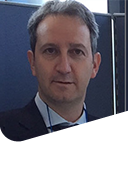
Alberto Figoli
In his plenary, Professor Figoli will talk about the latest trends on how innovative membrane development could influence and improve the membrane process in water treatment. Membrane demand is strongly linked to overall economic activity. Therefore, a strong correlation exists between membrane consumption per capita (including membrane modules, systems, and additional equipment) and the global gross domestic product (GDP) per capita. The membrane growth in an emerging market is expected to increase from 5.4 billion USD in 2019 to 8.3 billion by 2024 USD. Membrane technology has been applied with success in many industrial fields and in some of them, as water and wastewater treatment, it can be considered a dominant technology. The latest research on the functionalization and coating on membranes to be applied in water treatment and specific examples on hydrophilic coating for Membrane Bio-Reactor and a hydrophobic coating for the Membrane Distillation process will be illustrated. As it is known, membrane bioreactors (MBRs) can be efficiently applied in wastewater treatment. However, main drawback of membranes is fouling, which can compromise their performance. For this reason, novel coated membranes able to withstand the phenomenon of fouling and exhibiting self-cleaning properties have been developed during the EU projects BioNexGen (G.A. 2460392) and Vicinaqua (G.A. 689427) and they are currently the objective of study of the bilateral Italy-Vietnam project MEMSEAFOOD (project ID VN21GR07) and it will be discussed in detail. Referring to the Membrane Distillation (MD), which could be considered still an emerging separation technology for water treatment, main drawbacks are wetting and thermal polarization with existing membranes, which are usually produced for micro- (MF) or ultrafiltration (UF) application and not specifically for MD. Therefore, innovative hydrophobic coating has been developed for modifying the surface of commercial MF hydrophilic membranes and the results obtained will be discussed in detail.
Alberto Figoli is serving as the Director of the Institute on Membrane Technology of the National Research Council of Italy, ITM-CNR since March 2019. He obtained his PhD degree at Membrane Technology Group, Twente University (Enschede, The Netherlands) in 2001. He graduated in Food Science and Technology at the Agriculture University of Milan 1996. Since December 2001, he has a permanent position as Researcher at Institute on Membrane Technology (CNR-ITM) in Rende (CS), Italy. In May - December 1996, he had an International experience in an industrial research lab at Quest International Nederland B.V. (ICI), Process Research Group, Naarden (The Netherlands) on “Setting of a pilot plant for aromatic compounds extraction using the pervaporation (PV) membrane technology”. He was granted for the “Short Term Mobility Programme” by CNR, in 2004 and 2005, at the “Environmental Protection Agency of United States (USEPA)”, Sustainable Technology Division, Cincinnati (USA) on “Volatile Organic Compounds (VOCs) and aroma removal using a novel asymmetric membrane by pervaporation” within the “Short Term Mobility Programmes” funded CNR. He is responsible and involved in various National and International projects. He is also responsible, within the CNR organisation, for two research lines on membrane preparation and characterisation and on pervaporation (PV) applications. He is author of more than 170 research papers in peer reviewed journals and several book chapters; five books, three patents and many oral presentations (also as invited and keynote lecture) in National and International Conferences and Workshops.
His research interests are:
- He is an expert in the field of membrane technology, particularly in membrane fabrication and characterisation and their application in the environmental field.
- He is working on the fabrication and characterisation of polymeric membranes, both in flat and hollow-fiber configurations for water treatment. The latest research is devoted to the development of membranes in a more sustainable way by using less toxic and greener solvents as well as bio-polymeric membranes. Coating using innovative functionalized monomers is also produced for improving the membrane properties. Furthermore, he is also involved in polymeric capsules preparation by membrane processes and membrane emulsification which aim to tailor their morphology to the release of the species of interest for food packaging, chemical and pharmaceutical application.
- He is also working on pervaporation (PV) applied to the removal of contaminants (i.e. VOCs) from water, Organic/Organic separations and aroma recovery from natural matrices.
Acknowledgment: The study reported was carried out within the project “Development of An Innovative Ultrafiltration (UF) Membranes in Anaerobic Membranes Biorector (AnMBR) for Seafood Processing Wastewater Treatment” (project MEMSEAFOOD, ID VN21GR07) in the framework of the Agreement on Scientific and Technological Cooperation between the Government of the Italian Republic and the Government of the Socialist Republic of Vietnam. The project is funded by the Italian Ministry of Foreign Affairs and International Cooperation (MAECI) and the Ministry of Science and Technology (Vietnam).
Track 10. Sustainable management of marine and coastal environments
Track 11. Sustainable management of the urban environment, the indoor and built environment
Track 12. Ecosystems and biodiversity conservation
Track 13. Environmental-change-related impacts on human, animal, and ecosystem health
Plenary 13: Social Media and Human Development: The Invisible Threat to Human Potential and Environmental Integration
-

Linda S. Pagani
In her plenary, Dr Pagani will address documented risks of the rapid onset of virtual environments to lifestyle, mental health, and environmental integration. Youth born since the millennium represent the highest global burden of mental disorders and treatment. They also have limited access to health care. To prevent spill-over effects on human potential, international societies must attend to environmental integration and lifestyle.
Recent generations report negative expectations regarding the environmental future. This has an impact on their mental health. A majority report disempowerment regarding individual influences on ecological problems. Nevertheless, there are contextual risk factors associated with lifestyle habits that are within grasp of human control.
Successfully managing lifestyle risks associated with virtual interactive tools, which are typically disguised as innocuous, represents a new major challenge to human psychological development. Social media, like videogames, implement compelling algorithms to captivate people into problematic use. Adolescence and emerging adulthood are particularly susceptible periods for addiction to social media and videogaming. The bio-psycho-social crises associated with these developmental periods render youth specifically responsive to emotional social media content. Increases in social media use significantly predict risks of insomnia, anxiety, and depressive symptoms, including self-harm and suicidality. Even moderate use forecasts mental health difficulties and pharmacotherapy.
Young people frequently scroll to derive a sense of belonging or to avoid struggles/emotional voids in their daily lives. Videogaming and social media motivations include coping, habit, and dealing with silence and boredom. Compared to offline reality, virtual nonsynchronous socialization practices are associated with social isolation, intolerance to negative emotions, and poor concentration. As a result, youth are at risk of frustration, fear, sadness, and underachievement. Such risks could lead to problems in meeting challenges to wellbeing, relationships, and developmental tasks at school and work.
Interventions that involve taking a break from social media predict significant mental health improvements. Abstention from social media forecasts improvements in well-being, often achieved through better sleep quality. The weaning process associated with abstaining is akin to that of food, drug, gambling, or alcohol withdrawal. Cognitive-behavioral strategies are recognized as effective ways to help create tolerance for solitude in times when it is normal to be productive, yet alone. We discuss the putative impact of international lifestyle guidelines and strategies on the environment.
Linda S. Pagani was born of post cold war-first-generation Italian immigrant parents. She was raised in the west end of the Greater Montreal area of Canada. Dr. Pagani worked as a registered nurse (1984-1994) at the Queen Elizabeth Hospital of Montreal in medicine, surgery, CVA rehabilitation, and finally, psychiatry. During that decade, she also earned university degrees at both Concordia University (BA Psychology 1986-1989) and McGill University (MA and Ph.D. Educational and Counseling Psychology 1989-1993) in Montreal, Canada. In 1993-1994, Dr. Pagani pursued a postdoctoral fellowship at the Université de Montréal, using some of the most valued and informative longitudinal data sets of North American children. After formally leaving hospital nursing in 1994, Dr Pagani began her professorial career at the University of Montreal. In 2005, Dr. Pagani was ranked Full Professor at the School of Psycho-Education. She also has served as Senior Researcher, since 1999, at the CHU Sainte-Justine University Hospital Research Center in the Brain Health Division.
Her research expertise examines modifiable factors in early childhood that affect human development. Her energy has been targeted at ultimately improving social/health policies addressing youth. She has always viewed psychology research/practice as a branch of public health. Her unique long-term research agenda currently examines: (1) Associated risks of screen-time in early childhood; (2) Associated benefits of physical activity and risks of sedentariness in childhood; and (3) Risks associated with a multitude of family environment factors such as maternal depression, second-hand smoke, minimized social interaction time, and bedroom screens. Dr. Pagani teaches and supervises fulltime at the University of Montreal including Research Methods and Scientific Writing, Social and Health Policy; and Clinical Evaluation and Treatment of ADHD. Her main clinical expertise as a practicing clinical health psychologist is the diagnosis and care of children, adolescents, and adults with ADHD, anxiety, and affective disorders. She offers 1-day, 3-day, or 5-day workshops on (1) scientific writing for AMA/APA journals; (2) ADHD Diagnosis/Care and (3) Social Science Research Methods.
